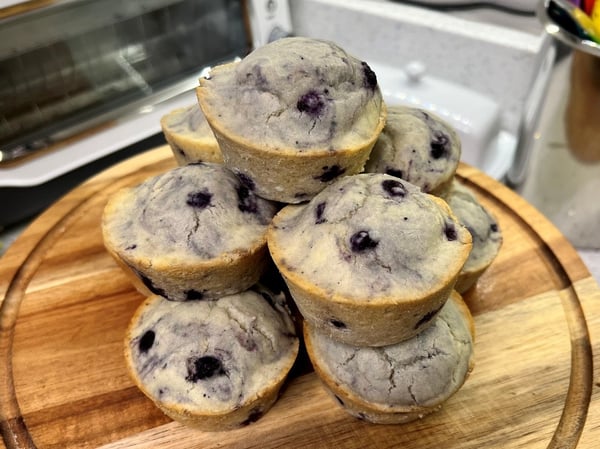
Gluten-free baking is terrifying. Most people who have to or choose to eat gluten-free have all had something GF and awful - overpriced, tiny compared to its glutenous counterparts, and so, so unbelievably dry and crumbly. Gluten is a protein found in wheat, barley and rye that essentially acts as an elastic in baked goods, giving us the soft, chewy texture we all know and love. Therein lies the first problem most people encounter with GF baking - once you remove the elastic, you can’t just work around it. You have to create an alternative.
My wife has been gluten-free for nearly 13 years. She always reflects back on those first few years in horror: “I tried to sub almond flour for all purpose flour, and it was awful.” So naturally the first time she offered to bake me something GF I was… nervous. Thankfully, the chocolate chip cookies she made absolutely blew me away. The flavor was nuanced, the texture was soft on the inside, crunchy on the outside, and they honestly tasted better than some “regular” chocolate chip cookies I’d eaten before. I asked what her secret was and she immediately replied “If you’re only using one type of alternative flour, it just won’t taste good.” There is no substitute for all-purpose wheat flour. But there is an unbelievable amount of gluten free flours out there, each with their own texture and flavor, that you can use to create something better.
Almond flour gives you a sweet, very tender crumb. Add in some quinoa flour and you’ve got a soft slightly nutty flavor somewhat reminiscent of a whole wheat flour. Tapioca starch can aerate a pastry and provide that “fluffy” texture we enjoy in cakes and cupcakes. Or try using mochi flour (also called sweet rice flour) when you want a bit of stretchy texture - this won’t replace the elasticity of gluten, but it will give you something in the same genre. There’s also sorghum flour, brown rice flour, buckwheat flour, cornstarch, coconut flour, potato starch… the list pretty much never stops. Alternative flours give you an entire world of flavors to pull from.
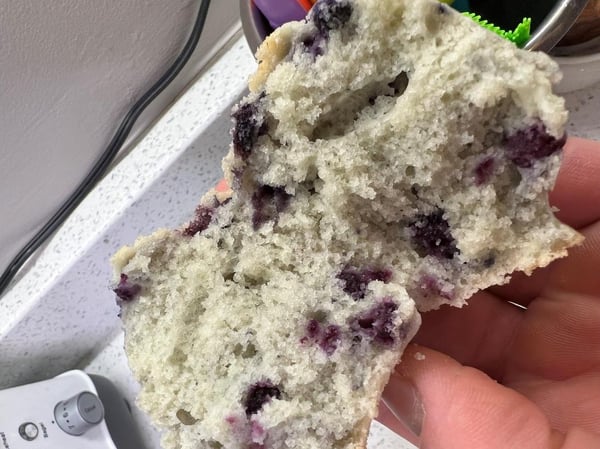 Gluten-free crumb is possible!
Gluten-free crumb is possible!
There is of course a caveat to all this - the price. One bag of all purpose flour may need to be replaced by six different GF flours to get something that tastes just as good, and all those flours can definitely add up. If you are truly committed to GF baking, it is absolutely worth it in my opinion. However, if you’re just looking to try it out or make something once - there are pre-made gluten free flour blends you can buy at the store. I’ve tried most of them and can recommend two: Cup4Cup baking blend and Bob’s Red Mill 1:1 baking mix. Cup4cup will give you a lighter end result due to the rice flour in it, and Bob’s will give you something a bit heartier because of the sorghum. I still recommend creating your own blend, but one of these two will work just fine in a pinch. (Unless you are making gluten free bread which is an entirely different ball game).
This blueberry muffin recipe is a great simple intro to flour blending. It only uses a few of the less expensive flours, and you may already have cornstarch in your pantry. Another fun tip - you can’t overwork the gluten by mixing for too long because... well, there is none!
For this recipe, start by preheating the oven to 350 degrees and gather your measured ingredients. Be sure to utilize dry and wet measuring cups accordingly. You’ll also need a whisk, rubber spatula, 2 medium mixing bowls, and electric hand mixer or stand mixer with paddle attachment. If you are using frozen blueberries, include an extra tablespoon of cornstarch.
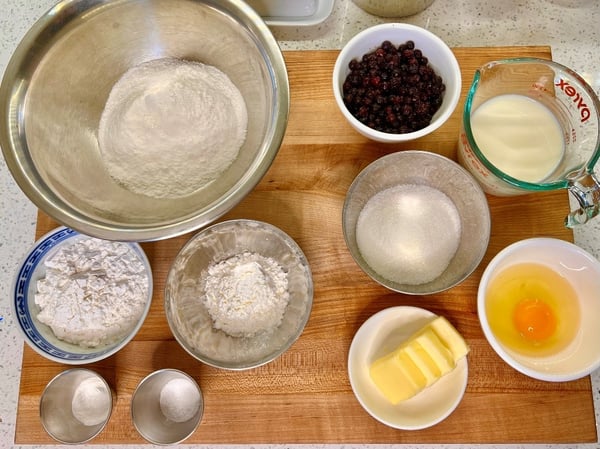 As with most batter type recipes you will typically mix your dry and wet ingredients separately before combining. We will start by whisking together the flours, starch, baking powder and salt until combined.
As with most batter type recipes you will typically mix your dry and wet ingredients separately before combining. We will start by whisking together the flours, starch, baking powder and salt until combined.
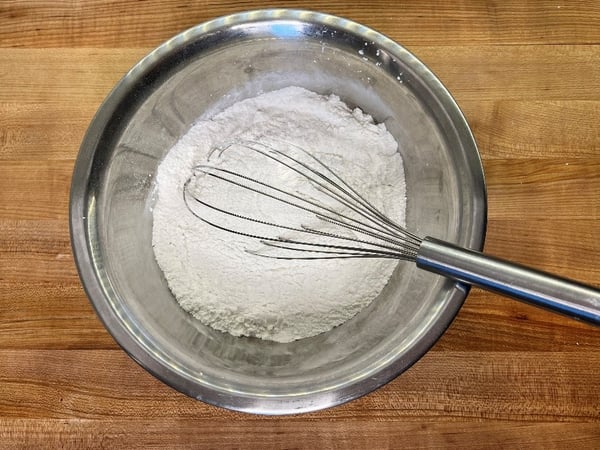 Another baking technique very popular in cookie and batter recipes is the “creaming” method. This method whips the butter and sugar together to aerate and evenly distribute the fat. It is best achieved with an electric tool and room temp butter. This step usually happens when combining eggs or wet ingredients.
Another baking technique very popular in cookie and batter recipes is the “creaming” method. This method whips the butter and sugar together to aerate and evenly distribute the fat. It is best achieved with an electric tool and room temp butter. This step usually happens when combining eggs or wet ingredients.
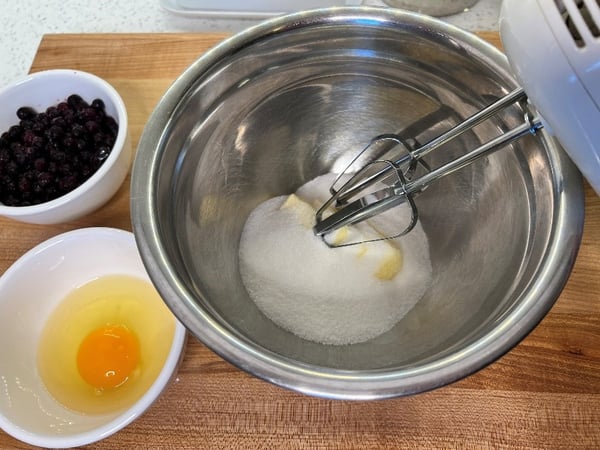 Cream together the butter and sugar until fluffy and light in color. This may take several minutes.
Cream together the butter and sugar until fluffy and light in color. This may take several minutes.
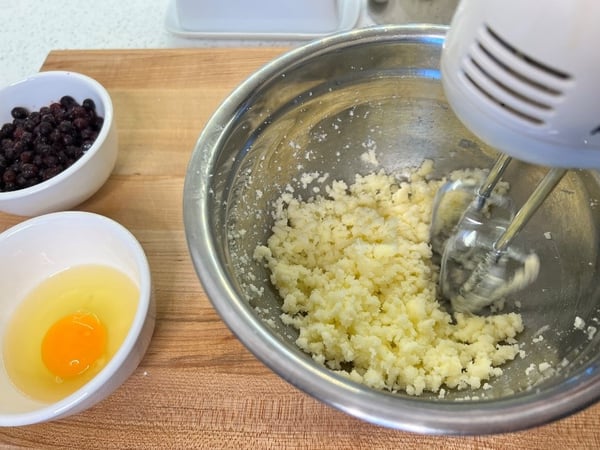
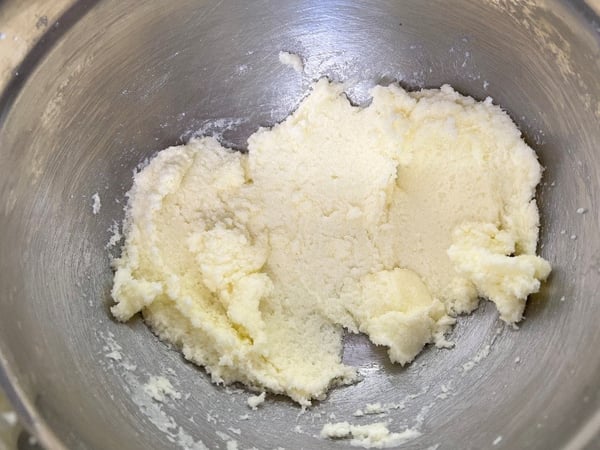 Add in the egg and whisk until fully incorporated.
Add in the egg and whisk until fully incorporated.
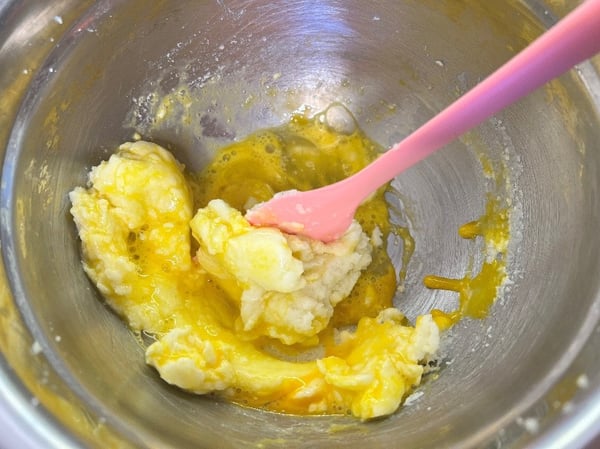
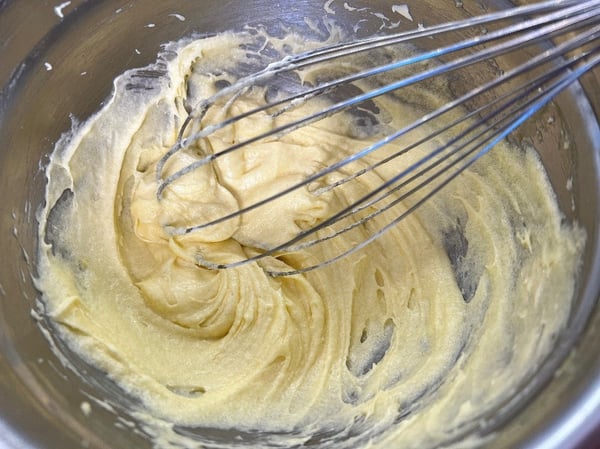 Next, we will whisk in half of the flour mixture until fully incorporated followed by the other half of the flour mix. Whisk until combined.
Next, we will whisk in half of the flour mixture until fully incorporated followed by the other half of the flour mix. Whisk until combined.
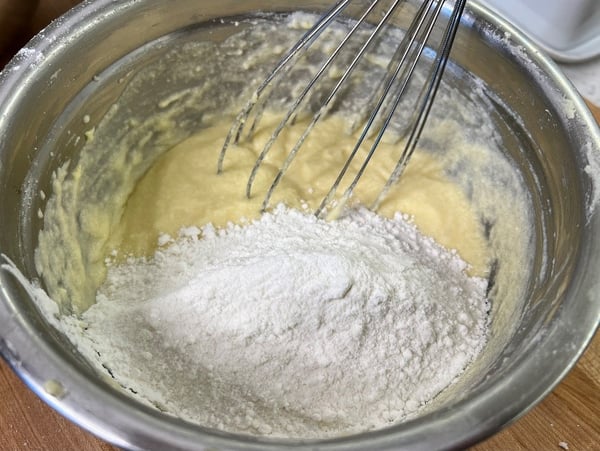 If using frozen blueberries, you’ll now toss them in some cornstarch. This step prevents extra moisture from the berries leeching into the muffin batter. If you are using fresh blueberries you can skip this step or still try it and see the differences. Its all about experimenting in order to dial in your own recipe!
If using frozen blueberries, you’ll now toss them in some cornstarch. This step prevents extra moisture from the berries leeching into the muffin batter. If you are using fresh blueberries you can skip this step or still try it and see the differences. Its all about experimenting in order to dial in your own recipe!
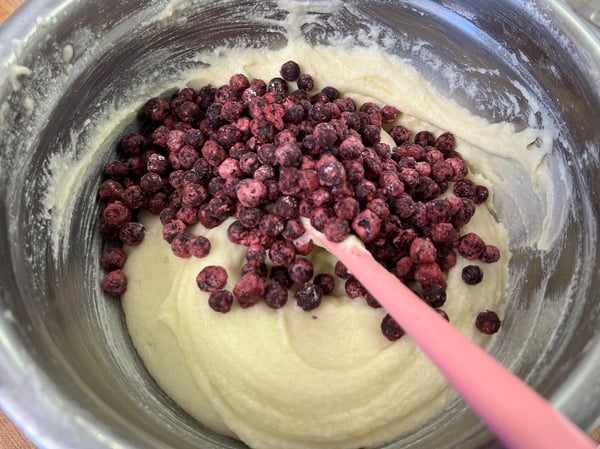 Now, gently fold the berries into the batter.
Now, gently fold the berries into the batter.
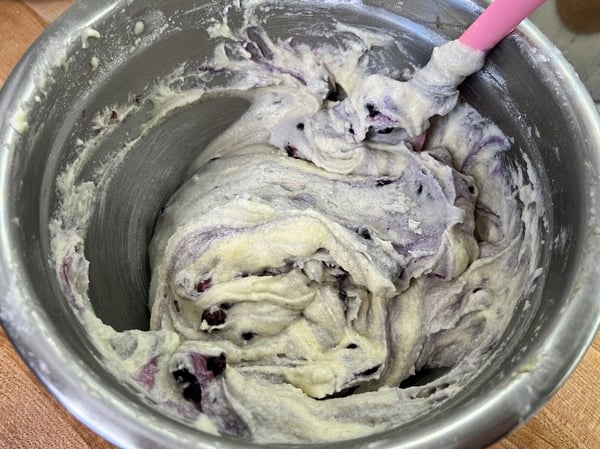 Distribute the batter evenly into a muffin pan with liners, if you prefer.
Distribute the batter evenly into a muffin pan with liners, if you prefer.
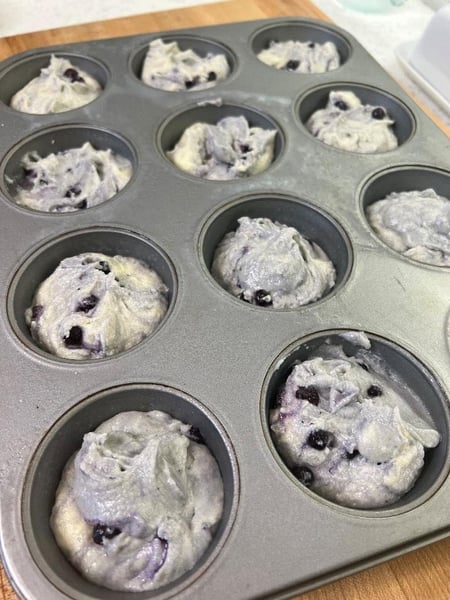 Bake the muffins at 350 degrees for 15 to 20 minutes. You’ll watch for browning around the edges of the muffin and use a toothpick to check the center of the muffin for raw batter.
Bake the muffins at 350 degrees for 15 to 20 minutes. You’ll watch for browning around the edges of the muffin and use a toothpick to check the center of the muffin for raw batter.
For best results, use a portion scoop and level off the batter so each muffin is around the same size. Allow your muffins to cool and enjoy!
Gluten-Free Blueberry Muffins
Scroll down for a printable version of this recipe
Yield 1 dozen muffins
Prep time: 15 minutes
Bake time: 20 minutes
Dry ingredients:
1 cup white rice flour
1/2 cup sweet rice flour
1/4 cup cornstarch
1 Tablespoon baking powder
1/2 teaspoon salt
Wet ingredients:
1/4 cup (1/2 stick) butter, softened
1/2 cup granulated sugar
1 large egg
3/4 cup milk
1 cup frozen blueberries, preferably wild Maine blueberries
1 Tablespoon cornstarch
- Preheat oven to 350°F. Line a 12-cup muffin pan with paper liners.
- In a medium bowl, whisk together dry ingredients.
- In a separate bowl, cream together butter and sugar until light and fluffy, about 1 minute. (Use high speed with a handheld mixer or medium-high speed with a stand mixer.
- Add egg. Combine until thoroughly blended, about 1 minute.
- Add half the dry ingredients; mix until well combined (mixture will be dry).
- Add milk and combine. Add remaining dry ingredients and blend for 1 minute.
- In a small bowl, coat blueberries with cornstarch. Fold blueberries into the batter.
- Spoon batter into lined muffin pans, about two-thirds full. Bake for 15 to 20 minutes or until muffins are golden and spring back when touched.
- Remove pan from oven and place on a wire rack to cool, 2 to 3 minutes. Remove muffins from pan and cool completely on rack. Store in an airtight container for 3 to 4 days, or freeze for up to 1 month.
I like to make a recipe a few times as it is written then make subtle changes and tweaks to make the recipe my own. Try different flours or berries to create your own amazing muffins!
Our sommelier Mary Ross lives gluten-free and has some tips for making it through the holidays if you have Celiac disease in her latest blog.
Looking to learn even more about mixing flours and other gluten-free baking techniques? Join us for Hands-On Gluten-Free Baking and Pastry on Saturday, February 11 at 10am at Lincoln Square.
We also have a gluten-free recipe collection and handy reference guide meant for anyone who wants to reduce their gluten consumption. Download it now!
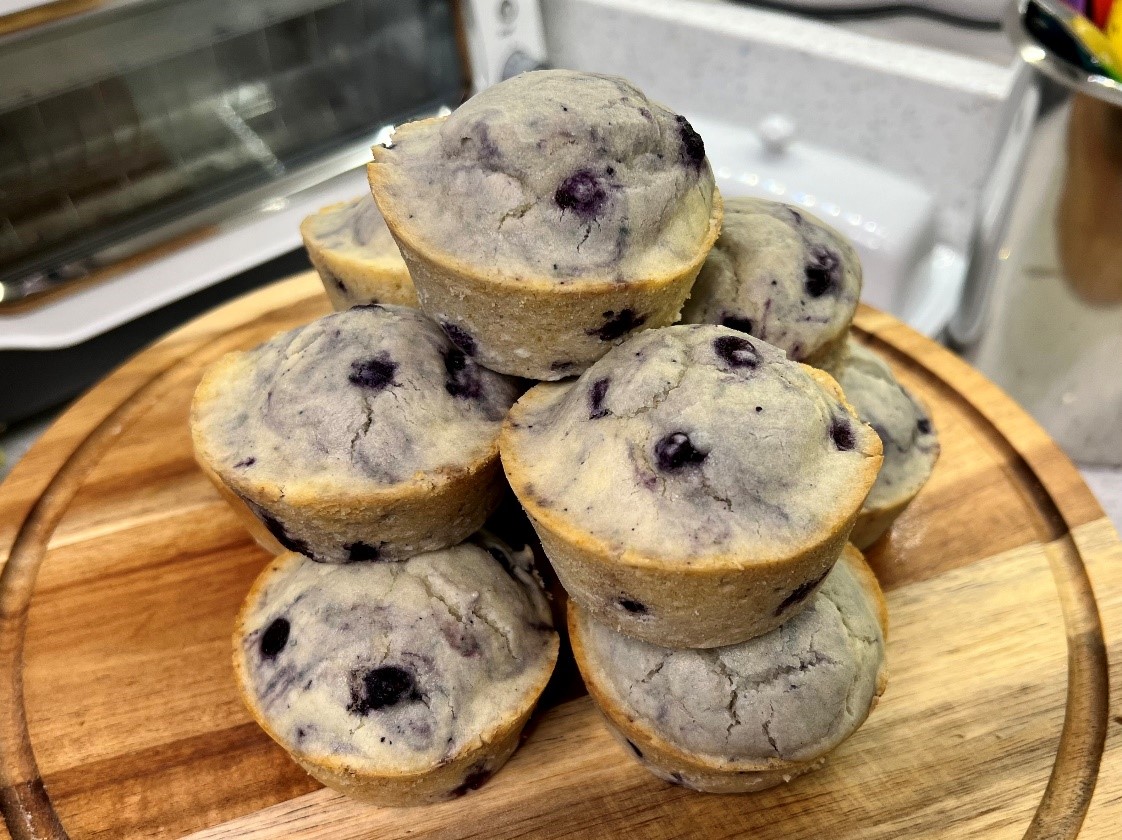
Gluten-Free Blueberry Muffins
Ingredients
- 1 cup white rice flour
- 1/2 cup sweet rice flour
- 1/4 cup cornstarch
- 1 Tablespoon baking powder
- 1/2 teaspoon salt
- 1/4 cup (1/2 stick) butter, softened
- 1/2 cup granulated sugar
- 1 large egg
- 3/4 cup milk
- 1 cup frozen blueberries, preferably wild Maine blueberries
- 1 Tablespoon cornstarch
Instructions
- Preheat oven to 350°F. Line a 12-cup muffin pan with paper liners.
- In a medium bowl, whisk together dry ingredients.
- In a separate bowl, cream together butter and sugar until light and fluffy, about 1 minute. (Use high speed with a handheld mixer or medium-high speed with a stand mixer.
- Add egg. Combine until thoroughly blended, about 1 minute.
- Add half the dry ingredients; mix until well combined (mixture will be dry).
- Add milk and combine. Add remaining dry ingredients and blend for 1 minute.
- In a small bowl, coat blueberries with cornstarch. Fold blueberries into the batter.
- Spoon batter into lined muffin pans, about two-thirds full. Bake for 15 to 20 minutes or until muffins are golden and spring back when touched.
- Remove pan from oven and place on a wire rack to cool, 2 to 3 minutes. Remove muffins from pan and cool completely on rack. Store in an airtight container for 3 to 4 days, or freeze for up to 1 month.

